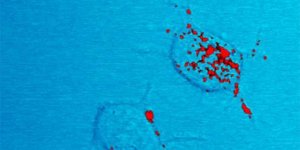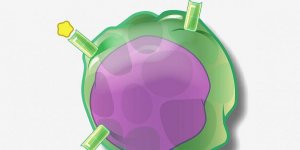| Health / Health News |
What Causes Cocaine Addiction
NIH, US | JANUARY 25, 2010
Researchers have identified a key mechanism in the brain that helps explain cocaine's addictiveness. The finding may lead to new therapeutic approaches.
Past studies showed that repeated cocaine exposure causes persistent changes in gene expression in the nucleus accumbens, a reward area of the brain.
Changes like this, which influence gene expression but don't change a gene's sequence, are called "epigenetic" changes.
Cocaine causes these changes through modifications of histones, the structural supports around which long DNA strands are wound to make chromosomes. Cocaine was previously shown to cause specific histone modifications called histone methylation, but the regulation of histone methylation hadn't yet been investigated.
A team of scientists led by r. Eric J. Nestler of the Mount Sinai School of Medicine set out to profile enzymes involved in histone methylation to see if any are influenced by cocaine.
The scientists gave one group of young mice repeated doses of cocaine and another group doses of saline. They found that 2 enzymes — G9a and GLP — were expressed at significantly lower levels 24 hours after repeated cocaine exposure. Both enzymes cause the same specific histone methylation, so the researchers set out to further investigate G9a, which has a higher activity level.
The scientists constructed a virus to deliver G9a genes and found that overexpressing G9a in the nucleus accumbens blocked cocaine-induced changes in gene expression. It also significantly dampened the mice's preference for cocaine.
The researchers also tested a commercially-available drug that inhibits both G9a and GLP. Indeed, the drug significantly decreased histone methylation in the nucleus accumbens and increased the preference for cocaine.
To explore how cocaine leads to lower G9a expression, the researchers looked at a candidate protein called ΔFosB. ΔFosB is known to regulate gene expression, accumulates in the nucleus accumbens after repeated exposure to cocaine and has also been linked to increased cocaine reward.
The researchers found that overexpressing ΔFosB artificially mimicked the effects of repeated cocaine exposure, reducing both G9a expression in the nucleus accumbens and levels of histone methylation. GLP expression, however, wasn't affected.
Taken together, these results show that cocaine acts, at least in part, by boosting ΔFosB levels in the nucleus accumbens, which in turn lowers G9a expression. That reduces histone methylation by G9A, leading to changes in gene expression in the brain's reward circuits.
YOU MAY ALSO LIKE



